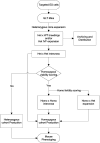Mouse large-scale phenotyping initiatives: overview of the European Mouse Disease Clinic (EUMODIC) and of the Wellcome Trust Sanger Institute Mouse Genetics Project
- PMID: 22961258
- PMCID: PMC3463797
- DOI: 10.1007/s00335-012-9418-y
Mouse large-scale phenotyping initiatives: overview of the European Mouse Disease Clinic (EUMODIC) and of the Wellcome Trust Sanger Institute Mouse Genetics Project
Abstract
Two large-scale phenotyping efforts, the European Mouse Disease Clinic (EUMODIC) and the Wellcome Trust Sanger Institute Mouse Genetics Project (SANGER-MGP), started during the late 2000s with the aim to deliver a comprehensive assessment of phenotypes or to screen for robust indicators of diseases in mouse mutants. They both took advantage of available mouse mutant lines but predominantly of the embryonic stem (ES) cells resources derived from the European Conditional Mouse Mutagenesis programme (EUCOMM) and the Knockout Mouse Project (KOMP) to produce and study 799 mouse models that were systematically analysed with a comprehensive set of physiological and behavioural paradigms. They captured more than 400 variables and an additional panel of metadata describing the conditions of the tests. All the data are now available through EuroPhenome database (www.europhenome.org) and the WTSI mouse portal (http://www.sanger.ac.uk/mouseportal/), and the corresponding mouse lines are available through the European Mouse Mutant Archive (EMMA), the International Knockout Mouse Consortium (IKMC), or the Knockout Mouse Project (KOMP) Repository. Overall conclusions from both studies converged, with at least one phenotype scored in at least 80% of the mutant lines. In addition, 57% of the lines were viable, 13% subviable, 30% embryonic lethal, and 7% displayed fertility impairments. These efforts provide an important underpinning for a future global programme that will undertake the complete functional annotation of the mammalian genome in the mouse model.
Figures


References
-
- Austin C, Battey J, Bradley A, Bucan M, Capecchi M, Collins F, Dove W, Duyk G, Dymecki S, Eppig J, Grieder F, Heintz N, Hicks G, Insel T, Joyner A, Koller B, Lloyd K, Magnuson T, Moore M, Nagy A, Pollock J, Roses A, Sands A, Seed B, Skarnes W, Snoddy J, Soriano P, Stewart D, Stewart F, Stillman B, Varmus H, Varticovski L, Verma I, Vogt T, von Melchner H, Witkowski J, Woychik R, Wurst W, Yancopoulos G, Young S, Zambrowicz B. The knockout mouse project. Nat Genet. 2004;36:921–924. doi: 10.1038/ng0904-921. - DOI - PMC - PubMed
-
- Auwerx J, Avner P, Baldock R, Ballabio A, Balling R, Barbacid M, Berns A, Bradley A, Brown S, Carmeliet P, Chambon P, Cox R, Davidson D, Davies K, Duboule D, Forejt J, Granucci F, Hastie N, de Angelis M, Jackson I, Kioussis D, Kollias G, Lathrop M, Lendahl U, Malumbres M, von Melchner H, Müller W, Partanen J, Ricciardi-Castagnoli P, Rigby P, Rosen B, Rosenthal N, Skarnes B, Stewart A, Thornton J, Tocchini-Valentini G, Wagner E, Wahli W, Wurst W. The European dimension for the mouse genome mutagenesis program. Nat Genet. 2004;36:925–927. doi: 10.1038/ng0904-925. - DOI - PMC - PubMed
Publication types
MeSH terms
Grants and funding
LinkOut - more resources
Full Text Sources
Miscellaneous

